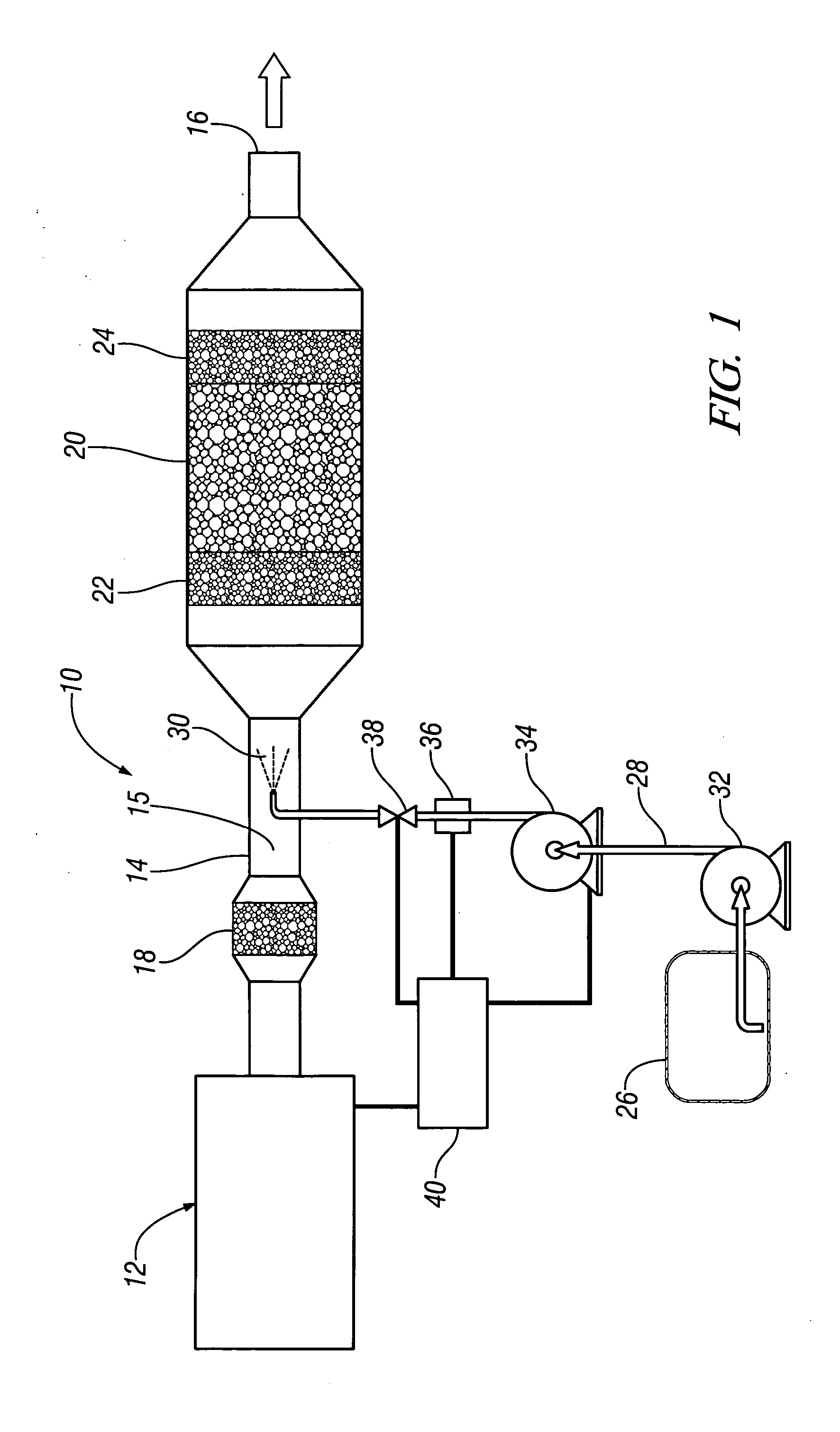Flash injector for NH3-SCR NOx aftertreatment
a technology of nox aftertreatment and injector, which is applied in the direction of machines/engines, mechanical equipment, separation processes, etc., can solve the problems of reducing the possibility of water condensation on the internal surfaces of the exhaust stream/ammonia-scr system, and achieves the effects of enhancing the ammonia-scr process, reducing or eliminating the need for static mixing devices
- Summary
- Abstract
- Description
- Claims
- Application Information
AI Technical Summary
Benefits of technology
Problems solved by technology
Method used
Image
Examples
Embodiment Construction
[0014] Referring now to the drawings in detail, numeral 10 generally indicates an ammonia-SCR exhaust after-treatment system for treatment of exhaust gases produced by an engine 12, such as a mobile internal combustion engine. The ammonia-SCR system 10 increases NOx conversion and therefore advantageously results in decreased NOx emissions from the engine 12. The ammonia-SCR system 10 also increases the low-end temperature range of SCR operation, leading to increased NOx conversion at low temperatures, such as during engine warm-up. Further, due to the increased efficiency of the ammonia-SCR system 10, the ammonia-SCR system may permit for a reduction in the catalyst volume, thereby lowering the cost of the system over prior ammonia-SCR systems.
[0015] The ammonia-SCR system 10 includes an exhaust conduit 14 for conducting an exhaust stream 15 in communication with exhaust ports of the engine 12, through for example, an exhaust manifold (not shown). The exhaust conduit 14 typically ...
PUM
| Property | Measurement | Unit |
|---|---|---|
| temperatures | aaaaa | aaaaa |
| temperature | aaaaa | aaaaa |
| freezing point | aaaaa | aaaaa |
Abstract
Description
Claims
Application Information
 Login to View More
Login to View More - R&D
- Intellectual Property
- Life Sciences
- Materials
- Tech Scout
- Unparalleled Data Quality
- Higher Quality Content
- 60% Fewer Hallucinations
Browse by: Latest US Patents, China's latest patents, Technical Efficacy Thesaurus, Application Domain, Technology Topic, Popular Technical Reports.
© 2025 PatSnap. All rights reserved.Legal|Privacy policy|Modern Slavery Act Transparency Statement|Sitemap|About US| Contact US: help@patsnap.com


